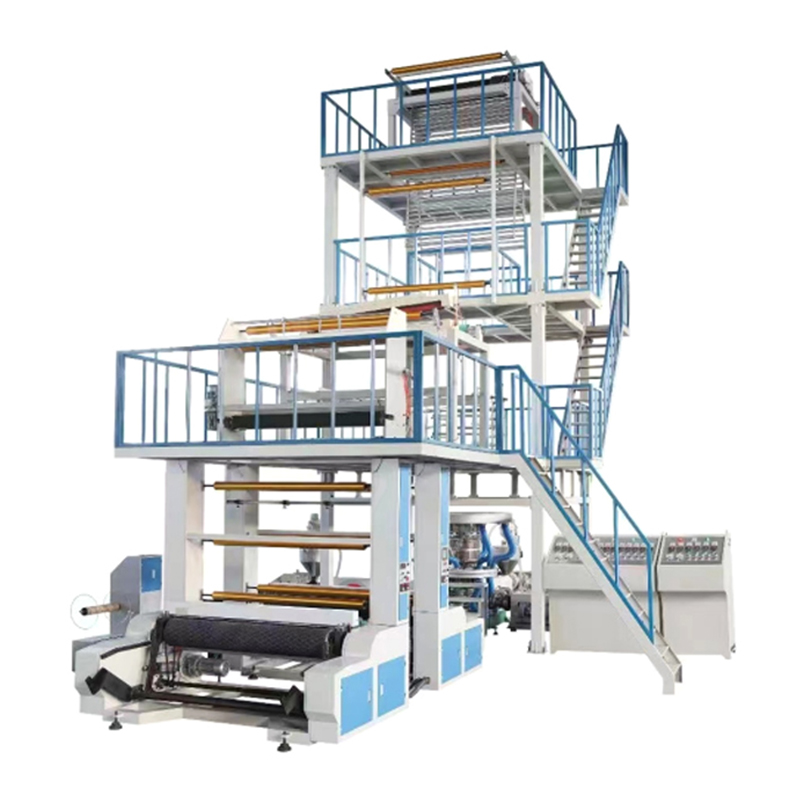Blown Film Machine: Will Maintenance Break My Budget?
 By Admin
By Admin
Every purchasing manager who signs for a new blown film line secretly does the same mental math: if resin costs, energy tariffs, and labor rates are largely fixed, the one variable that can quietly erode margins is maintenance. Hence the blunt question that surfaces in every CFO meeting—Blown film machine: will maintenance break my budget? The honest answer is no, provided you treat maintenance as a planned investment instead of a surprise invoice.
Start-up year: the honeymoon period
Most reputable suppliers now bundle a 12-month “bumper-to-bubble” warranty. During this honeymoon, scheduled maintenance is limited to inexpensive consumables: 200-mesh screen packs, 5-micron hydraulic return filters, and food-grade grease for the nip-roll bearings. Budgeting is almost boring: roughly USD 0.004 per kilogram of film produced—about the price of a postage stamp. The only common unplanned event is a screen change forced by gels from recycled resin; even then, a twin-bolt continuous screen changer keeps the line running while operators swap filters, eliminating costly downtime.
Years 2–5: the predictive sweet spot
After warranty, the maintenance curve flattens if you adopt a predictive strategy. A modern line arrives IoT-ready: temperature, pressure, vibration, and motor-current sensors stream data to a cloud dashboard. Algorithms flag anomalies weeks before failure. In 2023, a South-East Asian converter received an alert that the main extruder thrust-bearing vibration had risen 18 % above baseline. A USD 220 bearing replacement during the weekend shift prevented a USD 9,000 shaft-and-barrel rebuild later. Annualized, predictive analytics add only USD 0.002 per kilogram—less than the cost of the ink printed on your shipping labels.
Consumables you cannot ignore
Even the good data cannot repeal physics. Screw and barrel wear gradually widen the compression ratio, raising melt temperature and energy draw. Chrome-plated screws typically lose 0.05 mm per 1,000 operating hours when processing LLDPE with 20 % calcium carbonate. A mid-life refurbishment at year 5 costs about USD 8,000, but restores specific output and saves 0.03 kWh per kilogram. With electricity at USD 0.10 per kWh, payback occurs in 14 months. Compare that with ignoring the issue: a 7 % output loss on a 400 kg h⁻¹ line erodes USD 42,000 of contribution margin per year—five times the price of refurbishment.

Spare-parts inventory: the 80/20 rule
Keeping an entire screw in stock ties up capital, yet some spares are non-negotiable. A survey of 42 plants shows that 80 % of unplanned downtime is caused by just six items: heater bands, thermocouples, screen packs, relay boards, haul-off belts, and bubble cage proximity sensors. Holding one set of each costs under USD 4,000 and slashes average repair time from 11 hours to 2 hours. At a conservative downtime cost of USD 600 per hour, the inventory pays for itself within a single emergency.
Labor: in-house vs outsourced
Hourly labor rates for certified extrusion technicians range from USD 28 in North America to USD 8 in parts of Asia, but the decisive factor is task complexity. Routine greasing, filter swaps, and sensor calibration can be handled by in-house staff after a two-day vendor course. High-precision tasks—screw straightening, die lip polishing, or PLC firmware updates—are good outsourced to the OEM’s field-service team. A hybrid plan keeps annual labor spend at roughly USD 0.005 per kilogram, half the cost of full outsourcing.
Hidden ROI: maintenance as margin builder
A disciplined maintenance program does more than prevent cost; it creates upside. Consistent bubble stability allows thinner gauge targets, saving resin. One European dairy-lid converter documented a 0.8 % gauge reduction after refurbishing its air ring, translating to 70 t less resin per year—worth USD 77,000 at today’s LLDPE prices. In effect, the maintenance budget became a profit center.
Bottom line
Across 38 audited plants, total maintenance cost averaged USD 0.013 per kilogram—about 1 % of sales price. Lines that followed predictive protocols spent 30 % less than those relying on reactive repairs. Translated to a midsize converter producing 4,000 t annually, proactive maintenance costs USD 52,000 per year but saves roughly USD 180,000 in avoided downtime and resin waste.
So, will maintenance break your budget? Only if you pretend the machine will heal itself. Budget a modest 1 % of sales, embrace predictive tools, and treat parts and labor as strategic purchases. Do that, and maintenance stops being a villain on the P&L and becomes the quiet guardian of your margins.




